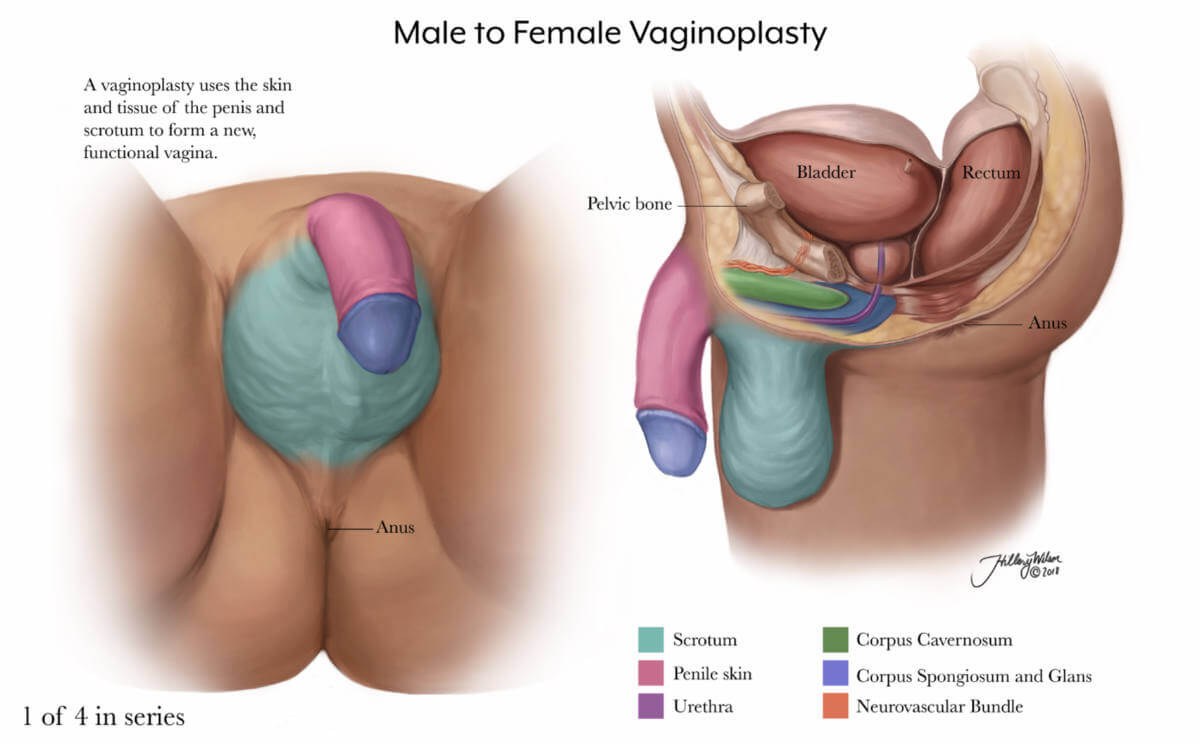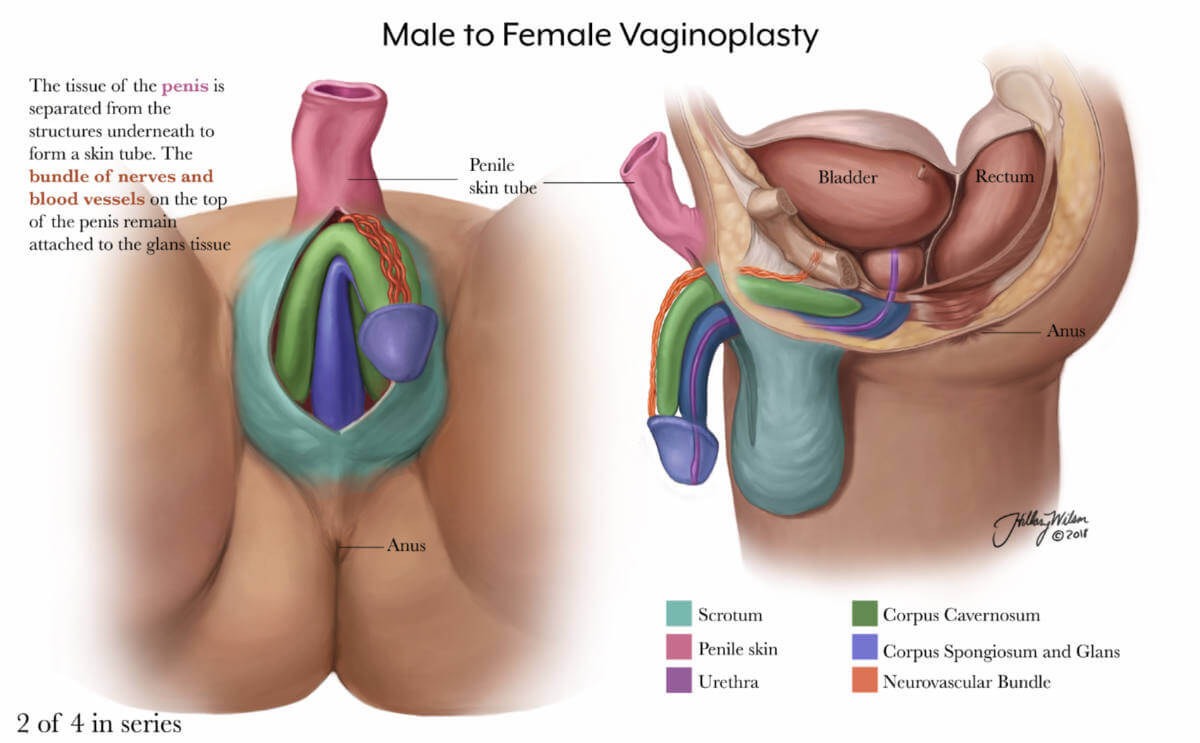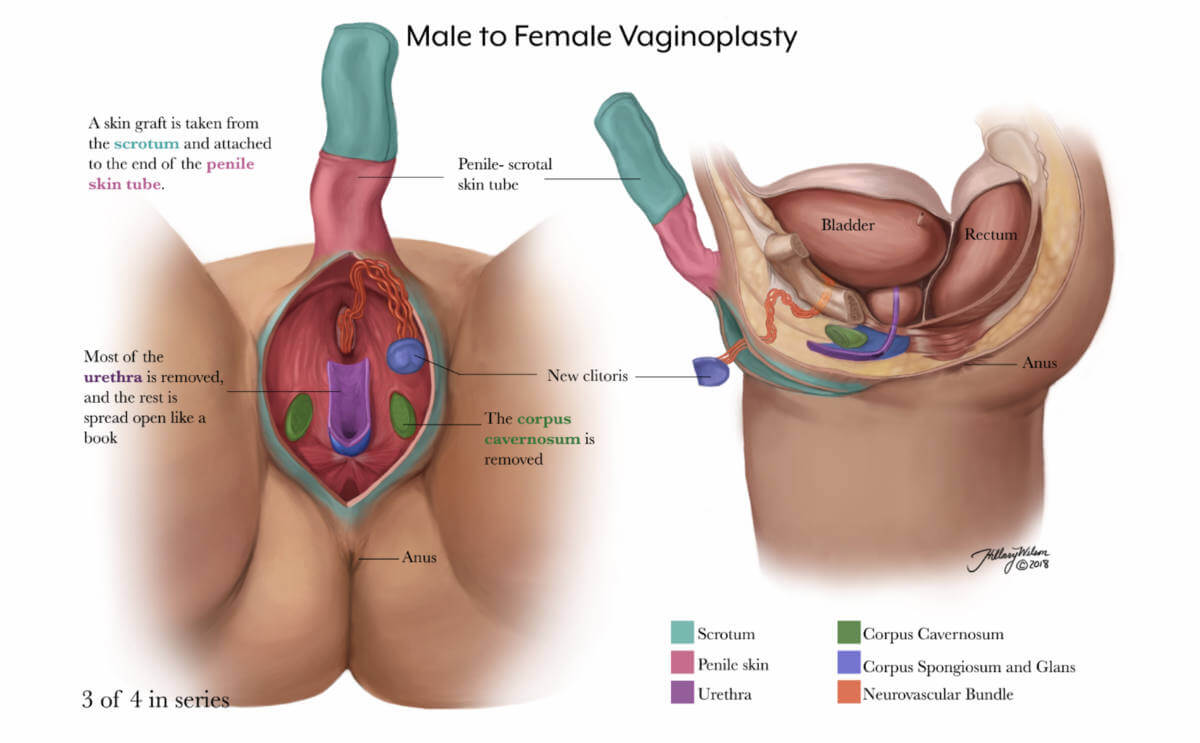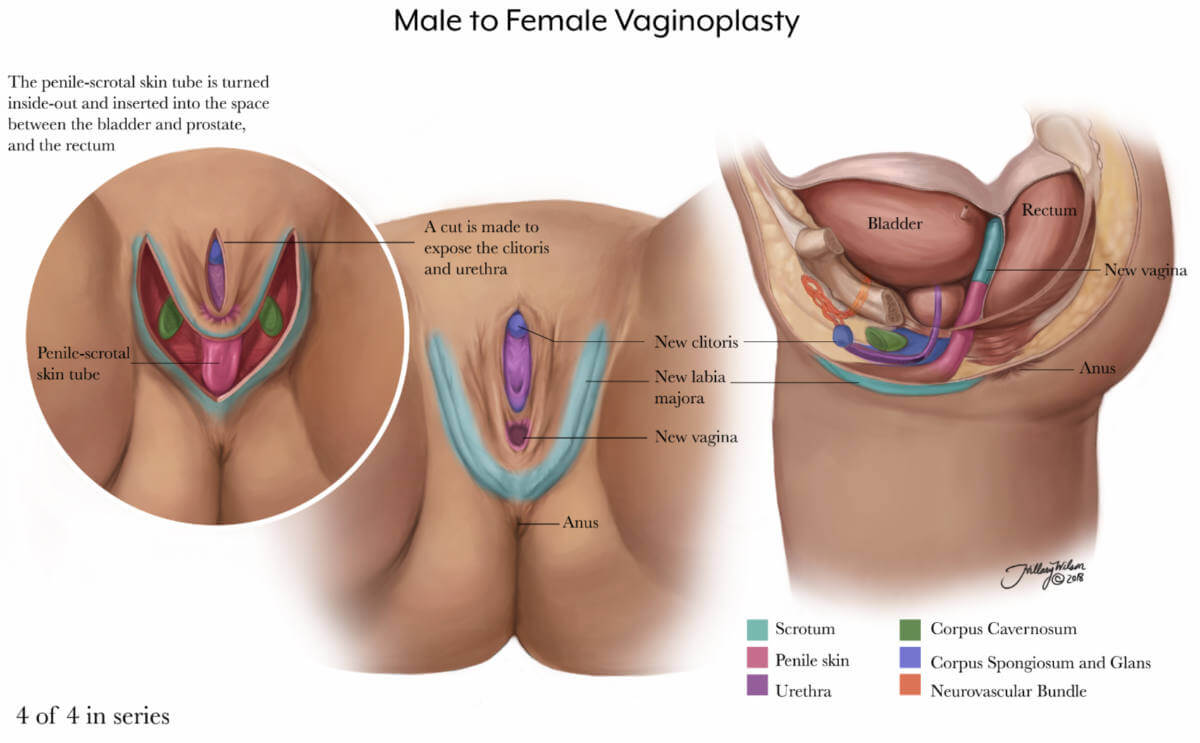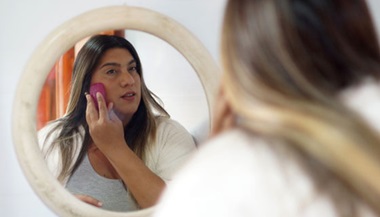Vaginoplasty for Gender Affirmation
Featured Experts:
Vaginoplasty is a surgical procedure for feminizing gender affirmation. Fan Liang, M.D., medical director of the Johns Hopkins Center for Transgender and Gender Expansive Health, and Andrew Cohen, M.D., director of benign urology at Johns Hopkins' Brady Urological Institute, review the options for surgery.
What is vaginoplasty?
Gender affirming surgery can be used to create a vulva and vagina. It involves removing the penis, testicles and scrotum.
During a vaginoplasty procedure, tissue in the genital area is rearranged to create a vaginal canal (or opening) and vulva (external genitalia), including the labia. A version of vaginoplasty called vulvoplasty can create a feminine-appearing outer genital area with a shallow vaginal canal.
What are the different types of vaginoplasty?
There are two main surgical approaches for this gender affirming surgery.
Vaginoplasty with Canal
This surgery is also known as full depth vaginoplasty. Vaginoplasty with canal creates not only the outer vulva but also a complete vaginal canal that makes it possible for the person to have receptive vaginal intercourse.
Vaginoplasty with canal requires dilation as part of the recovery process in order to ensure a functioning vagina suitable for penetrative sex. There are two approaches to full depth vaginoplasty.
For penile inversion vaginoplasty, surgeons create the vaginal canal using a combination of the skin surrounding the existing penis along with the scrotal skin. Depending on how much skin is available in the genital area, the surgeon may need to use a skin graft from the abdomen or thigh to construct a full vaginal canal.
Robotic-assisted peritoneal flap vaginoplasty, also called a robotic Davydov peritoneal vaginoplasty or a robotic peritoneal gender affirming vaginoplasty, is a newer approach that creates the vaginal canal with the help of a single port robotic surgical system.
The robotic system enables surgeons to reach deep into the body through a small incision by the belly button. It helps surgeons visualize the inside of the person’s pelvis more clearly and, for this procedure, creates a vaginal canal.
There are several advantages to this surgical technique. Because using the robotic system makes the surgery shorter and more precise, with a smaller incision, it can lower risk of complications. Also, the robotic vaginoplasty approach can create a full-depth vaginal canal regardless of how much preexisting (natal) tissue the person has for the surgeon to use in making the canal.
Not every surgical center has access to a single port robotic system, and getting this procedure may involve travel.
Vulvoplasty
This procedure may be called shallow depth vaginoplasty, zero depth vaginoplasty or vaginoplasty without canal. The surgeons create feminine external genitalia (vulva) with a very shallow canal. The procedure includes the creation of the labia (outer and inner lips), clitoris and vaginal opening (introitus).
The main drawback to this approach is the person cannot have receptive vaginal intercourse because no canal is created.
There are advantages, however. Because this is a much less complicated approach than vaginoplasty with canal, vulvoplasty can mean a much shorter operation, with less time in the hospital and a faster recovery. Vulvoplasty also involves less risk of complications, and does not require hair removal or postoperative dilation.
Do I need to have hair removal before vaginoplasty? When should I start?
Permanent hair removal (to remove the hair follicles to prevent regrowth) before surgery is recommended for optimal results. Patients are advised to start hair removal as soon as possible in advance of vaginoplasty, since it can take three to six months to complete the process. The hair removal process readies the tissue that will be used to create the internal vaginal canal. For people who are not able to complete the hair removal in advance, there may be residual hair in the canal after surgery.
How long is vaginoplasty surgery?
Most vaginoplasty surgeries last between four and six hours. Recovery in the hospital takes three to five days.
Recovery After Vaginoplasty
After surgery, you will be admitted to the hospital for one to five days. You will spend most of this time in bed recovering. Your care team will monitor your pain, and make sure you are healing appropriately and are able to go to the bathroom and walk.
On average, it can take six to eight weeks to recover from a vaginoplasty. Every person’s recovery is different, but proper home hygiene and postoperative care will give you the best chance for a faster recovery. Patients who have had vaginoplasties need to stay within a 90-minute drive of the hospital for four weeks after surgery so doctors can follow up and address any issues.
Consistent daily dilation for the first three months is essential for best outcome. Before you go home, you will be taught how to dilate if you have a vaginoplasty with canal. You will be given dilators before discharge to use at home.
What is dilation after vaginoplasty?
Part of the healing process after vaginoplasty involves dilation — inserting a medical grade dilator into the vagina to keep your vaginal canal open as it heals. The hospital may provide you with a set of different sized dilators to use.
A doctor or therapist from your care team will show you how to dilate. This can be difficult at first, but professionals will work with you and your comfort level to help you get accustomed to this aspect of your healing process. You will begin dilating with the smallest dilator in the dilator pack. You continue to use this dilator until cleared to advance to the next size by your care team.
During the first few weeks after surgery, you must dilate three times a day for at least 20 minutes. It is very important that you continue dilating, especially during your immediate postoperative period, to prevent losing vaginal depth and width. Patients continue to use a dilator for as long as the care team recommends. Some patients may need to dilate their whole lives.
Is dilation after vaginoplasty painful?
Dilation should not be a painful process. At first, you may feel discomfort as you learn the easiest angles and techniques for your body. If you feel severe pain at any time during dilation, it is important to stop, adjust the dilator, and reposition your body so you are more comfortable. It is also important to use lubricant when you dilate. A pelvic floor therapist can work with you to help you get used to this aspect of recovery.
Will I have a catheter?
Yes. While you are in the hospital, you will have a Foley catheter in the urethra that will be taken out before you go home.
Will I have surgical drains?
Yes, your surgeon will place a drain while you are in the operating room, which will be removed before you leave.
Can I shower after vaginoplasty surgery?
Yes. It is very important to clean the area to prevent infections. You can gently wash the area with soap and water. Never scrub or allow water to be sprayed directly at the surgical site.
Is going to the bathroom different?
It is important to remember for the rest of your life that when wiping with toilet paper or washing the genital area, always wipe front to back. This helps keep your vagina clean and prevents infection from the anal region.
You may notice some spraying when you urinate. This is common, and can be addressed with physical therapy to help strengthen the pelvic floor. A physical therapist can help you with exercises, which may help improve urination over time.
Is the vagina created by vaginoplasty sexually functional?
Yes. After vaginoplasty that includes creation of a vaginal canal, a person can have receptive, penetrative sex.
You must avoid any form of sexual activity for 12 weeks after surgery to allow your body to recover and avoid complications. After 12 weeks, the vagina is healed enough for receptive intercourse.
What will my vagina look like?
Vulvas and vaginas are as unique as a fingerprint, and there are many anatomic variations from person to person. Surgical results vary, also. You can expect that the surgery will recreate the labia minora and majora, a clitoral hood and the clitoris will be under the hood. Make sure you discuss your concerns with your surgeon, who can help you understand what to expect from your individual surgical results.
What is the average depth of a vagina after vaginoplasty?
The depth of a fully constructed vaginal canal depends on patient preferences and anatomy. On average, the constructed vaginal canal is between 5 and 7 inches deep. Vaginal depth may depend on the amount of skin available in the genital area before your vaginoplasty. This varies among individuals, and some patients may need skin grafts.
Newer robotic techniques may be able to increase the vaginal depth for those people with less existing tissue for the surgeon to work with.
Will I need any additional surgery after vaginoplasty?
You may need additional surgical procedures to revise the appearance of the new vagina and vulva. Later revisions can improve aesthetic appearance, but these are not typically covered by insurance.
Vaginoplasty Complications
Vaginoplasty is safe, overall, and newer techniques are reducing the risks of problems even further. But sometimes, patients experience complications related to the procedure. These can include:
- Bleeding
- Slow wound healing
- Narrowing of the vaginal canal (regular dilating as prescribed can lower this risk)
Some rare complications may require further surgery to repair:
- A fistula (an abnormal connection between the new vagina and the rectum or bladder)
- Injury to the urethra, which may require surgery or a suprapubic catheter
- Rectal injury (very rare) may require a low-fiber diet, a colostomy or additional surgery.
Be sure to discuss your concerns with your surgeon, who will work with you for optimal results.




